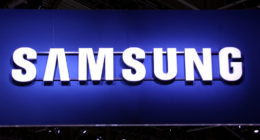Over the past couple years, Hewlett Packard Enterprise (HPE) has been working to reinvent computing architecture under its project named, The Machine. It has now successfully demonstrated its Memory-Driven Computing architecture at the Discover London conference.
The Memory-Driven computing focuses on computer memory rather than raw processors. The memory has been put up in the front in the computer platform. However, the memory driven computing architecture is just a prototype, it makes the way for future innovations.
The prototype is designed in such a way that its compute nodes share a pool of fabric attached permanent memory. Having a Linux-based operating system, the prototype includes the new X1 photonics module. A custom software has also been designed by HPE to handle the load of this abundant memory. The execution speed is expected to increase by up to 8,000 times as per simulations of the design phase.
It thereby suggests that this memory driven architecture will have multiple orders of magnitude compared to our conventional PCs. Several other technologies developed during the research of project, The Machine, will also be commercialized by HPE in near future. These include non-volatile memory, the fabric of the prototype-photonics, ecosystem enablement, new security features and hardware.
The new technology is capable of improving the performance of small Internet of Things (IoT) devices, the company yet majorly aims at high-end computing tasks. Commenting on the same, Antonio Neri, Executive VP and General Manager of HPE remarked,
We have achieved a major milestone with ‘The Machine’ research project — one of the largest and most complex research projects in our company’s history, With this prototype, we have demonstrated the potential of Memory-Driven Computing and also opened the door to immediate innovation. Our customers and the industry as a whole can expect to benefit from these advancements as we continue our pursuit of game-changing technologies.
Yet for HPE there is long bridge to cross to ultimately bring down this high-end technology to the consumer market.





